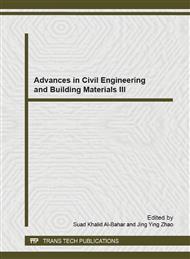p.40
p.44
p.49
p.53
p.58
p.62
p.67
p.73
p.78
Analysis of Absorption Coefficient for Eco-Friendly Acoustical Absorbers
Abstract:
Primarily used for domestic buildings as a sound absorber are glass wool, rock wool, etc. These absorbers as well as waste absorber created by recycling wastes, PP+PET fiber absorber made from polypropylene and polyester, wood wool board bonded with finely sliced roots of trees and foamed aluminum absorber are recyclable eco-friendly absorbers that are constantly being developed. In this study, we compared the sound absorption performance of currently used absorbers and eco-friendly building absorbers. As a result, the NRC (Noise Reduction Coefficient) was found to be 0.85 for glass wool, 0.95 for rock wool, and 0.70 for polyester, 0.65 for waste absorber, 0.75 for PET+ PP fiber absorber, 0.40 for wood wool board, and 0.75 for foamed aluminum absorber. Based on the results of these absorption coefficients, we expect the usability of the absorbers continues to increase as future eco-friendly building absorbers.
Info:
Periodical:
Pages:
58-61
Citation:
Online since:
December 2013
Authors:
Price:
Сopyright:
© 2014 Trans Tech Publications Ltd. All Rights Reserved
Share:
Citation:


